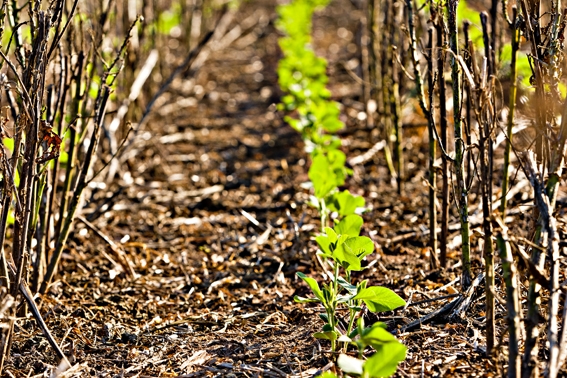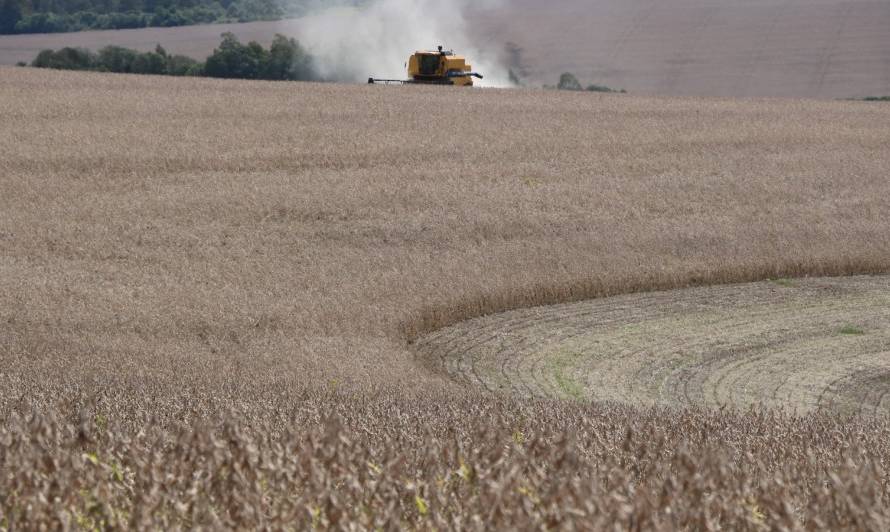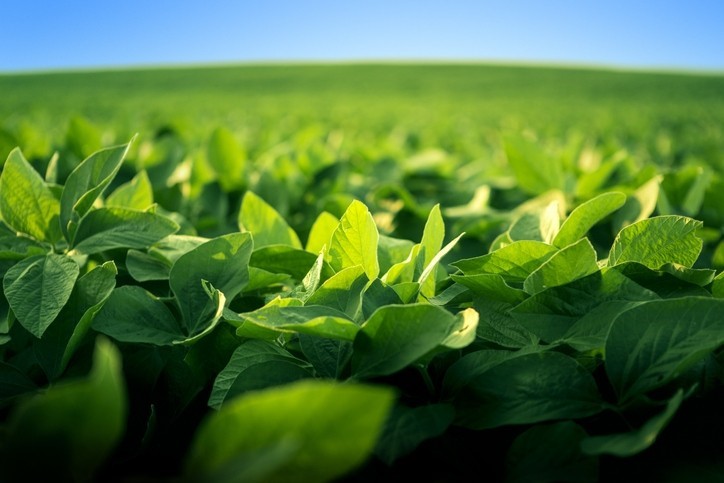This summer, soybean crops have faced water shortages in several regions of Brazil, with losses already confirmed in Rio Grande do Sul, the second largest soybean producer in the country. Irregular rainfall is common in La Niña years, but some management strategies can reduce the impacts of drought on soybeans. Water shortages have been the main cause of crop failures in Brazilian soybeans and other summer crops, with the greatest impact in southern Brazil. In Rio Grande do Sul alone, Farsul estimates that 34.4 million tons of soybeans were not harvested in the last five years.

Photo: Disclosure/FecoAgro RS
According to the Emater/RS Newsletter, the regions most affected by the drought at the moment are in the Center-West of Rio Grande do Sul, where soybean crops sown at the beginning of the recommended period have small plants, severe defoliation and irreversible production losses. Crops planted in December are in full bloom and beginning to form pods, with limited leaf and branch emission. Productivity tends to be unsatisfactory, since many plants are small in size (20 to 30 cm) and are in full reproductive phase (55% of the crops are in the grain filling phase).
This harvest, Rio Grande do Sul is facing its third year of drought in the summer. In the 2021/22 harvest, soybean yields fell to 1,400 kg/ha, and in 2022/23 the loss was 30% in the harvest (Emater/RS), with an average yield of 1,980 kg/ha (data from Conab). “Even in the 2023/24 harvest, when RS recorded a good amount of rainfall, the results in many crops in Rio Grande do Sul were below 3,000 kg/ha”, assesses agrometeorologist Gilberto Cunha, from Embrapa Trigo, acknowledging that in this harvest the tendency is for drought-related losses to be repeated in the State.
“From the beginning of January until now, rainfall has been irregular and often localized, and differences in the patterns of plants in nearby crops in the same region can be seen,” Cunha recalls. According to him, producers need to adapt to this new scenario of climate variability, where irregular rainfall distribution seems to be increasingly consolidated. “Producers need to adopt more resilient crop management strategies and not give up on some rural security instrument.”

Photo: Disclosure/Embrapa
In Mato Grosso do Sul, the last two harvests have been challenging for rural producers due to weather conditions that significantly impacted production potential (Famasul). In this harvest, according to the Siga/MS Newsletter, water stress affects 46% of the total area planted with soybeans, with the crops most affected being those planted between September and mid-October. Between December and January, there was a drastic reduction in rainfall, especially in January, a crucial month for soybean crops in the state, as it usually concentrates the grain filling period.
In the states of Paraná and Santa Catarina, the risk of localized losses in the summer harvest has not yet been ruled out. According to the latest report from Deral/PR, 68% of soybeans are still in the maturation phase, but where the harvest has already begun, yields are quite varied due to irregular rainfall during the crop cycle, with crops planted earlier suffering more from the effects of the drought. In Santa Catarina, there is also great variation in the situation of crops where the harvest is beginning (11% of the area), due to irregular rainfall and high temperatures, with some crops producing below expectations, while others exceed expectations. According to the Epagri/SC bulletin, the harvest is showing variations and indicates signs of a reduction in production in relation to the initial estimate.
Strategies to minimize losses
Researcher Alvadi Balbinot, from Embrapa Trigo, highlights some management strategies that can minimize the impacts of drought on soybeans. See below each factor that can be managed by the producer:
Slook:

Photo: Gabriel Faria
Construction of a soil profile with adequate chemical, physical and biological fertility, observing the fundamentals of the Direct Planting System. The soil profile without significant physical and/or chemical restrictions allows the vigorous growth of the soybean root system, accessing water at depth. Soybean roots can grow up to 2 m deep, increasing the depth of water used by the crop, compared to roots confined only to the surface layer.
Some indicators can be used to characterize a soil that allows high growth of soybean roots, such as: absence of toxic aluminum and high calcium content up to 40 cm deep; high base saturation; use of diversified systems, with species of high root growth, such as brachiaria, millet, sudan grass, oats and triticale, which allow the formation of stable biopores, essential for water infiltration, gas exchange and formation of preferential channels for the growth of soybean roots; reduced soil mobilization; and soybean sowing in soil with a high percentage of straw cover.
Wultivars:
There are soybean cultivars on the market that respond better in environments with water deficit. Even though some cultivars do not yield the highest yields in environments with high production potential, they may be superior in drought conditions, providing production stability. In general, the most drought-tolerant cultivars have vigorous roots with high health.
Pplant population:

Photo: Alexandre Ortega
Use plant populations within the range recommended by the cultivar breeders. Using populations below the recommended range reduces the crop's ability to close the rows, especially in conditions of water deficit in the vegetative phase, reducing the capacity to use light and nutrients, in addition to increasing water losses from the soil directly to the atmosphere (evaporation). On the other hand, excess plants can cause the formation of a leaf area index above the ideal, increasing the use of water to maintain transpiration, which can compromise crop productivity, especially when the water deficit occurs in the reproductive phase of the crop.
Iirrigation:
For producers who have water reservoirs and conditions to implement an irrigation system, it is essential to determine the volume of water to be reserved for use in times of lack of rain. Rio Grande do Sul, for example, has a high potential for soybean production to respond to irrigation, since in many situations the only limiting factor is water, with good soil, radiation and temperature conditions. Following good irrigation practices is important to reduce costs and increase water use efficiency.
ZARC
Soybean planting should be guided by the Agricultural Zoning of Climatic Risk, which is an instrument of agricultural policy and risk management in agriculture. The ZARC is designed to minimize risks related to adverse climate phenomena and allows each municipality to identify the best time to plant crops, in different types of soil and cultivar cycles. Following the ZARC is a strategy to reduce losses in adverse conditions that repeat themselves over the years.
See some guidelines from researcher Alvadi Balbinot by clicking here.





